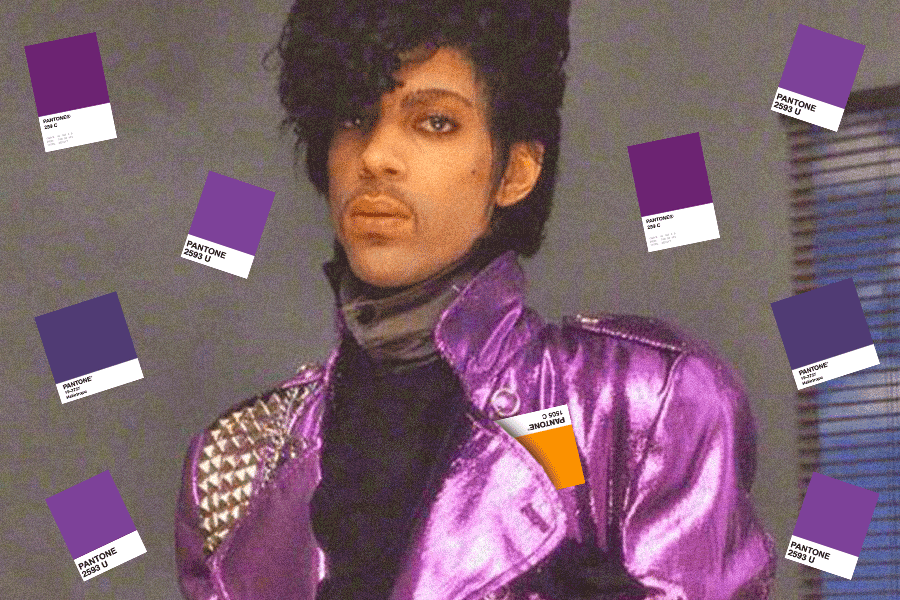It has come to the world’s attention that Prince’s favorite color was not actually purple, but orange. That is fine for a mega-branded celebrity, but, “Do adults even have a favorite color?” a colleague asked after hearing this surprising factoid. Ha, surely not, I scoffed. Grownups don’t need the shorthand of children to identify themselves — how can anyone love one color, one movie, one band, one book the absolute most, after having experienced all the colors, all the movies, all the bands, and all the books, to say nothing of all the ones you still haven’t?
Turns out, I’m wrong — not only did every alleged adult in this office have a go-to favorite color, film, band and even favorite dipping sauce (ranch) at the ready, but a little investigation turned up that this is super normal, and our personalities are locked in place earlier than we realize — and probably forever.
Take musical taste: Age 14, and again age 24, are in effect “magic ages” when our musical preferences are hardwired for life. That’s for a number of reasons — these are peak emotional and sexual awakening years; people tend to be more open and accepting of new stuff when they’re younger; your ears stop noticing all the intricacies of music as you age. After that, most of us stop even looking for new music, and go on to regard everything new as terrible noise.
It gets worse: Our personalities cement a few years later, too. We pretty much are who we are going to be forever by the time we’re 30 years old — something Harvard psychologist William James called “half-plastered.” This means your core personality — measured by the “big five” traits of agreeableness, openness, extraversion, neuroticism, and conscientiousness — already figured out and you mostly stop changing after your 20s. The key word is mostly: After that, you can change, but it’s a lot harder, and takes a lot more work.
Those personality traits can also predict the types of movies you like: People who prefer comedies are more open, and somewhat less conscientious. Horror movie fans are less agreeable. Likewise, other research claims that the very books, TV, mags and films you absorb are also indicators of your personality. It also turns out that most adults DO have a favorite color: It’s blue. Everyone’s favorite color is actually blue, especially men.
I have proven here that having favorites as an adult is, in fact, predictable and even logical and nothing to scoff at, as I originally suggested. But here is where I will double down on my original argument, albeit in an amended way: While it may seem that our preferential steps are laid out for us, this is all the more reason to resist self-categorization. To shed our favorites; to expose ourselves to new things; to try always to expand, not shrink, our identities.
Yes, maybe you can tell a lot about me if I say my favorite band is the Pixies (the fact that I heard them at age 14, for instance), but it won’t give you much insight into the person I really am in the world. Nor does it mean we would get along just because you like the Pixies, too. Just because you like It’s a Wonderful Life, Born to Run, salted caramels and the book Who Moved My Cheese? does not mean you are not hella gross and irritating to be around.
I blame social media, dating apps and memes, Twitter bios and character limits and the representational power of the gif—plus the maddening ever-present expression “It me!” posted under a cat pushing a ball of yarn around. All of it is a massive shorthand we’ve developed to immediately understand each other so we know who are people are without having to use so many words. That is efficient, and all of these things are exceptionally entertaining, but they are still woeful reductions of human beings to elevator pitches.
Take the concept of a relationship “starter kit” — the idea that each person should have a kit of faves at the ready to let someone know the art that most defines you. You pick a record, a book, a film and a piece of art and imagine them boxed up to hand over to someone you want to know “you” — the real you, that is. But while these are fascinating data points, they are only entry points into the weird morass that is an actual person. You are not easily reducible, one hopes, to such shorthand. You are large, you contain multitudes.
By now, ideally you have watched tons of movies and listened to many records. You have tried many foods, and you like them depending. Perhaps you really like a certain wine with pasta, but a beer after a long day. Or your favorite movie is The Great Escape when you’re sick, but Godfather 2 when you’re not.
It is okay. The next time someone asks you your favorite song in the whole world, resist saying “1999.” There have been many new songs since then; give a new one a shot, okay? And as the research about your personality cementing at 30 suggests, you can change; you can grow. People do it all the time. This is why so many olds take up carpentry and gardening later in life: Liking the same shit forever is boring. It will get you to your 30, and after that, you’re going to need some new shit to look at.
Please, for the sake of human progress — try a new author out today, or a new dipping sauce (jalapeño ranch). Give yourself a chance to update yourself — or at the very least, give yourself something new to tweet about. And if you’re under 30, cram in as much as possible now, so you have a helluva lot more to get you through the rest of your existence.

